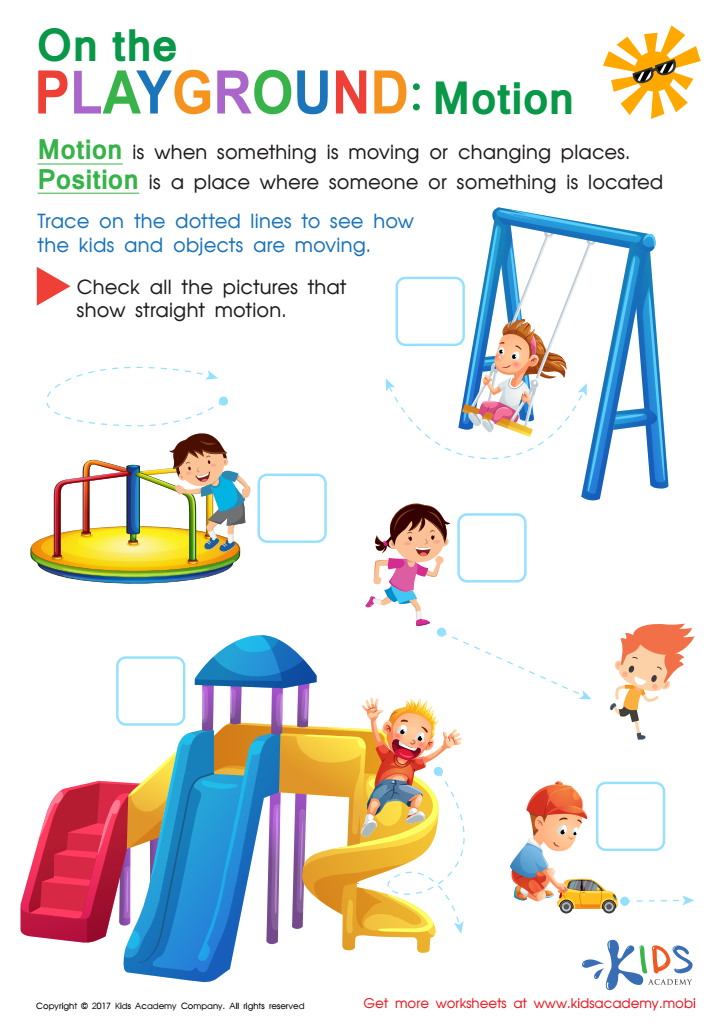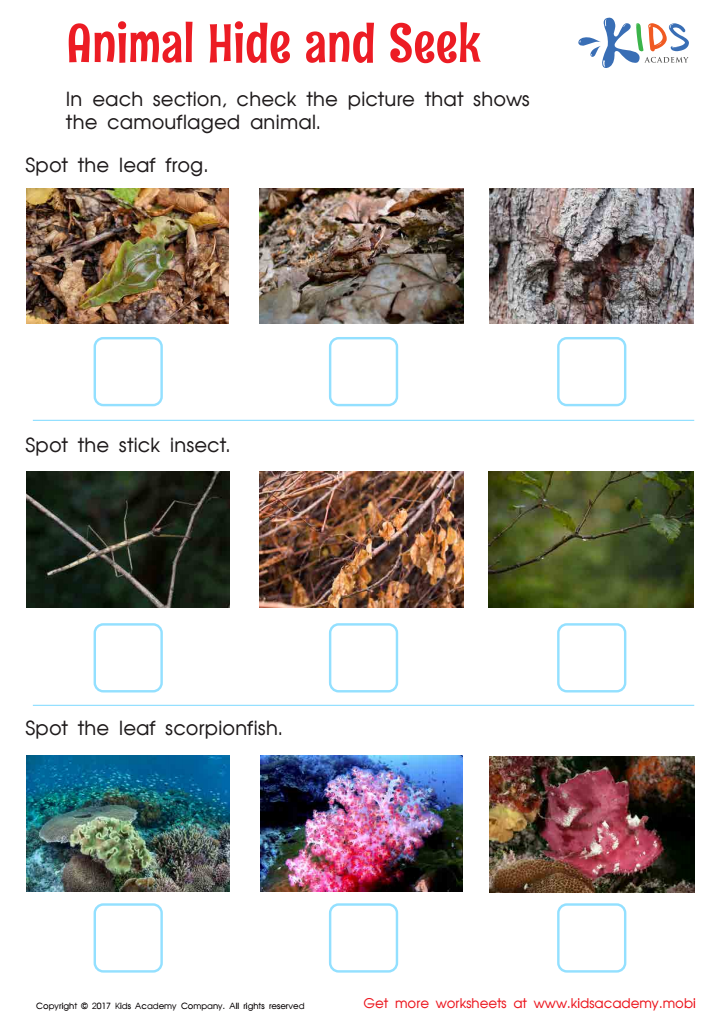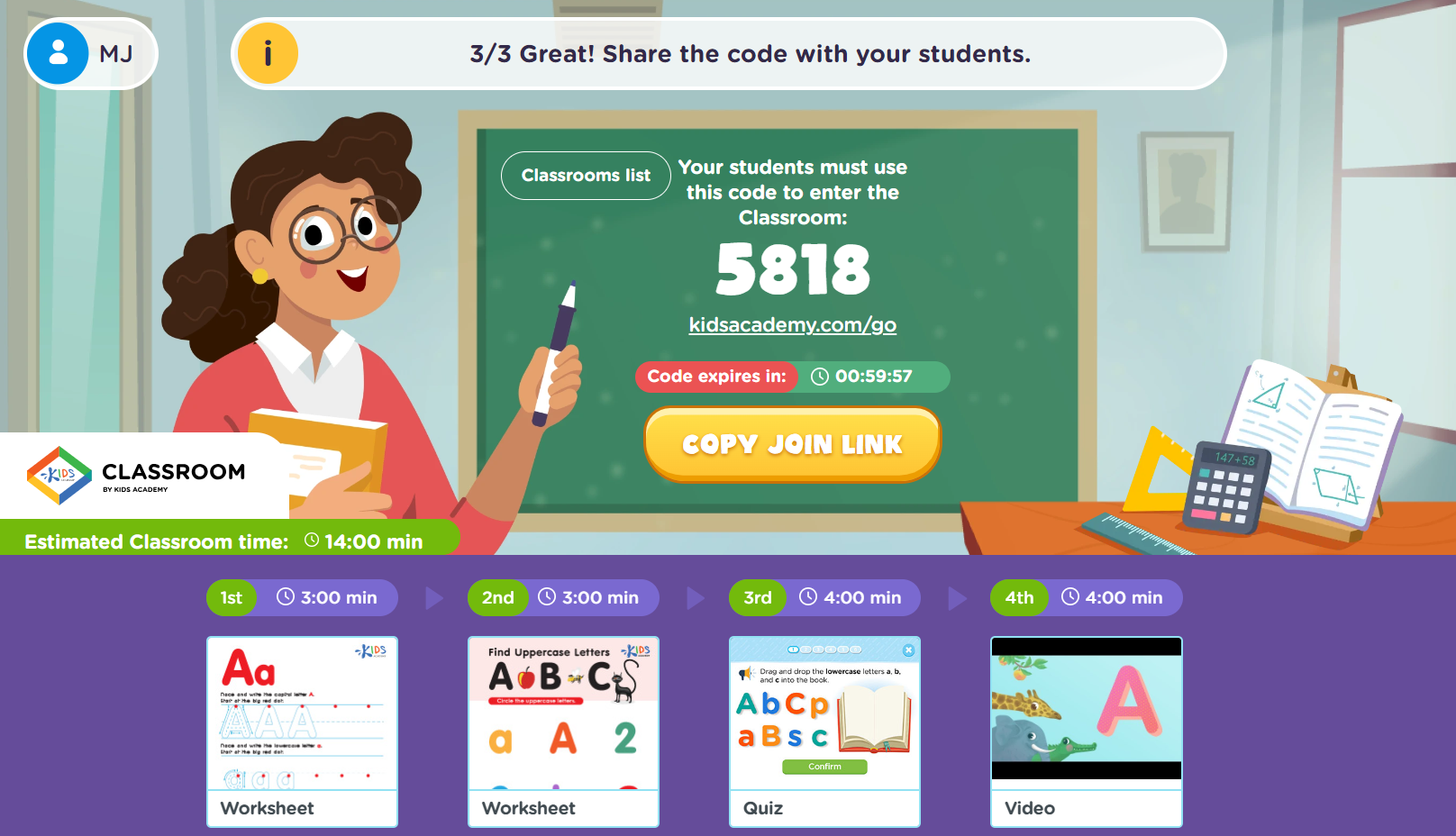Visual Perception Skills Normal Science Worksheets for Ages 5-7
4 filtered results
-
From - To
Enhance your child's learning journey with our Visual Perception Skills Normal Science Worksheets for ages 5-7! Designed to develop essential visual perception skills, these engaging worksheets combine fun activities with scientific concepts. Young learners will refine their ability to interpret visual information, recognize shapes, and understand spatial relationships. Our meticulously crafted worksheets encourage creativity and critical thinking, making learning enjoyable and interactive. Perfect for home or classroom use, these resources foster independent learning while building foundational skills that will support future academic success. Explore our collection today to empower your little scientists in mastering visual perception through hands-on exploration!


Position and Motion Worksheet


Will It Make a Shadow? Worksheet


Animal Homes Worksheet


Animal Hide and Seek Worksheet
Visual perception skills are critical for young children, particularly ages 5-7, as they form the foundation for learning and development in various domains. Parents and teachers should care about these skills because they directly impact a child's ability to process visual information effectively, which is crucial in early education settings. At this age, children are developing fundamental skills in reading, writing, and math, tasks that require strong visual discrimination, spatial awareness, and the ability to synthesize visual cues.
Enhancing visual perception skills helps children recognize letters and numbers, understand shapes and patterns, and improve their hand-eye coordination. These abilities not only support academic success but also foster confidence and independence in learning.
Moreover, children with well-developed visual perception skills are better equipped to navigate their environments, understand social cues, and engage with peers, enhancing their overall emotional and social development.
By prioritizing activities and strategies that enhance these skills—such as puzzles, games, and art projects—parents and teachers can create a richer learning experience. Investing in visual perception strategies lays a strong foundation for lifelong learning, ensuring children reach their full potential both academically and personally.

 Assign to My Students
Assign to My Students


.jpg)












